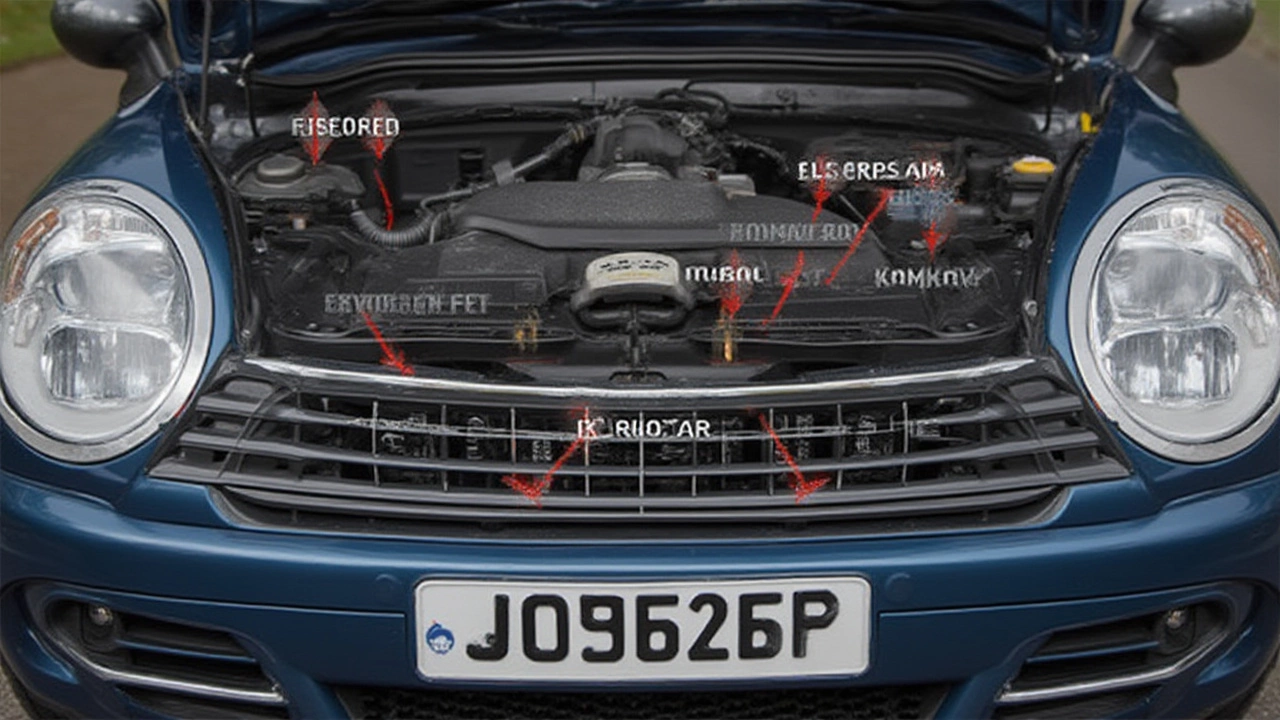You’re cruising along, music up, windows down… and then your temperature gauge starts creeping into the red. Most people ignore it for a while, but what if that innocent-looking spike means something far nastier is coming? If you’ve ever wondered whether that dodgy radiator could actually blow your head gasket, you’re not alone. This isn’t just another theory your buddy cooked up at the bar: radiator trouble can actually trash your head gasket, sending repair costs straight through the roof. Let’s break down how these two parts are linked and what you can do to keep your engine healthy.
How Your Radiator and Head Gasket Work Together
Your radiator and head gasket have one thing in common: both are crucial to keeping your engine cool under pressure. Here’s the quick version: your engine creates a ton of heat. It needs coolant to flow around and absorb that heat, and your radiator’s job is to push the heat out so your engine doesn’t cook itself.
The head gasket? It sits between your engine block and the cylinder head, forming a seal that holds in both engine compression and fluids. The head gasket has to manage the wild heat swings that happen every time you drive, especially when you’re stuck in traffic or tearing it up on a long trip.
If your radiator starts to clog up or leak, the hot coolant can’t get cooled properly. Suddenly your head gasket is sitting inside a much hotter engine. Now, gaskets don’t like heat. Too much and they’ll warp, crack, or just blow out entirely. So while a radiator and a head gasket might seem like distant cousins in your engine bay, they’re actually closer than you think—one bad apple can spoil the bunch.
How a Bad Radiator Sets Off Head Gasket Failure
Imagine your radiator is slacking off. Maybe it’s half-blocked with corrosion, maybe it’s leaking fluid onto the pavement, or maybe the fan’s dead and not pulling air through. Whatever the reason, your engine can’t get rid of heat fast enough.
Engine temps climb. Fast. And if it keeps happening, metal parts inside your engine start to expand beyond what they’re designed for. The head gasket, that thin slice of material holding it all together, becomes the weakest link. The expansion can crush the gasket, open up leaks, or create weird pressure points. Suddenly, you’re dealing with coolant in your oil, white smoke pouring from your exhaust, or a bubbly coolant reservoir—all textbook signs of a blown head gasket.
It gets worse. For every minute your car stays overheated, the risk of head gasket disaster just goes up. According to a survey from AAA, overheating is responsible for almost 30% of roadside engine failures every year, and gaskets are right in the firing line. Once the damage is done, there’s no quick fix—head gasket repairs can run from $1,200 to $2,000 or even higher on newer models. Prevention starts to look like a real bargain in comparison.

What Are the Warning Signs? Don’t Ignore These!
You don’t usually wake up one day with a blown head gasket. There are warning signs—unmistakable if you know what to look for. Here’s what you’ll notice with a failing radiator that can turn into a head gasket nightmare:
- Engine running hot or constantly overheating
- Noticeable drops in coolant level (even with no visible leaks)
- Sludge under your oil cap (may look like chocolate milk)
- White smoke from the exhaust, especially at startup
- Sweet smell (that’s coolant!) in your exhaust fumes
- Bubbling or foaming in your coolant tank
- Radiator fan cycling non-stop
Spotting even one of these and ignoring it can end up doubling or tripling your repair bill. If you’re thinking “eh, it’ll get me through one more week,” you might be right… or you might end up stranded on the hard shoulder with a dead engine, cursing yourself for not acting sooner.
Why Regular Radiator Checks Matter (More Than You Think)
Here’s the part nobody wants to hear: most head gasket failures due to radiator problems are 100% preventable with just a bit of routine care. Coolant needs to stay clean and topped up, and your radiator can’t work if it’s plugged with gunk or leaking like a sieve. Most automakers recommend a coolant flush every 30,000 to 60,000 miles, but if you drive a lot in traffic jams, tow heavy loads, or push your engine hard, do it sooner.
Statistically, vehicles over 10 years old are far more likely to develop radiator blockages or leaks simply because metal and rubber degrade over time. According to CarMD’s annual Vehicle Health Index, the most common check engine light issue in cars aged 10 to 15 years is cooling system failure—and the average repair bill is $895 if caught late. Regular checks are cheaper. You can spot trouble early, buy the parts yourself, and either DIY it or have a shop fix issues before they force you into a total engine rebuild.
Here’s a quick cheatsheet:
- Pop your hood and check for leaks around the radiator every week or two
- Keep an eye on your temperature gauge; if it’s spiking, don’t ignore it
- Replace coolant as recommended and watch for contamination
- Run your heater; poor heating can also hint at cooling issues
- Use the right type of coolant for your make and model
| Warning Sign | Likely Cause | Action |
|---|---|---|
| Engine overheats rapidly | Radiator blockage/low fluid | Stop & check coolant/radiator |
| White exhaust smoke | Blown head gasket | Get car checked immediately |
| Coolant loss | Leak (possible radiator or gasket issue) | Inspect for leaks |
| Milky oil | Coolant mixing with oil | Don’t drive, tow to mechanic |

Smart Steps to Prevent Cooling System & Head Gasket Disasters
Okay, you know the risks. But what can you actually do to avoid turning radiator drama into a wallet-draining head gasket job?
- Stick to a maintenance schedule. Your owner's manual spells out when to flush coolant, inspect hoses, and check for leaks. Don’t put this off. Set a reminder on your phone, mark it in your calendar, whatever it takes.
- Use quality coolant and the correct mix. Skimping here doesn’t pay. Cheap or wrong-type antifreeze can react with your engine’s metals, forming blockages or corroding parts.
- Check radiator caps and hoses. Cracked hoses or a leaky cap can dramatically drop pressure, making your radiator useless. These are cheap fixes—ignore them at your own cost.
- Watch for early symptoms. We’ve gone over the big ones, but if your heat’s cold even when the engine’s running or you find oily residue in your radiator, don’t wait.
- Don’t go cheap on overheating. If you see your temperature red-lining, pull over ASAP. Running five more minutes can turn a $70 thermostat job into a $2,000 gasket replacement.
And don’t forget: if you’re ever buying a used car, asking about cooling system work isn’t just smart, it’s essential. Any used car without a documented radiator flush in the last two years is worth a closer look… and a lower offer.
So can a bad radiator really cause head gasket failure? Absolutely—and you don’t want to find out the hard way. Treat your cooling system like the lifeline it is and you’ll save yourself a world of stress, debt, and disappointment. Happy (and cool) motoring, mate!

